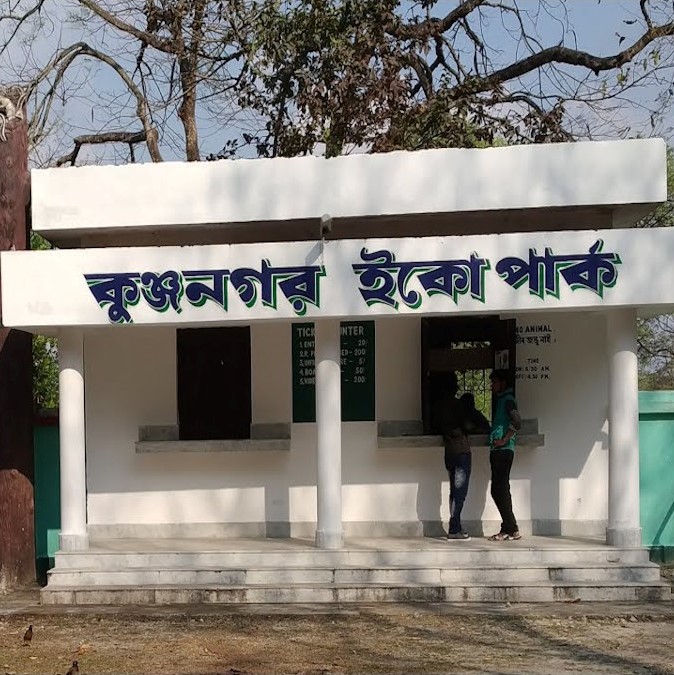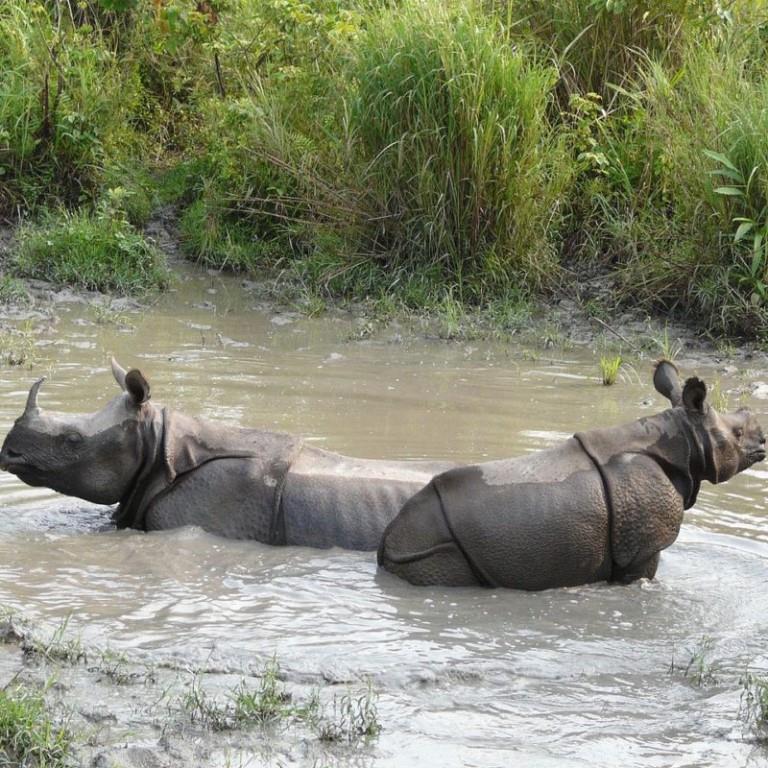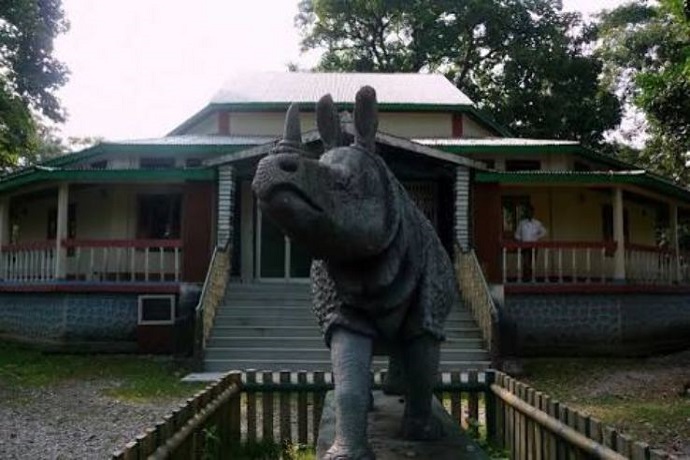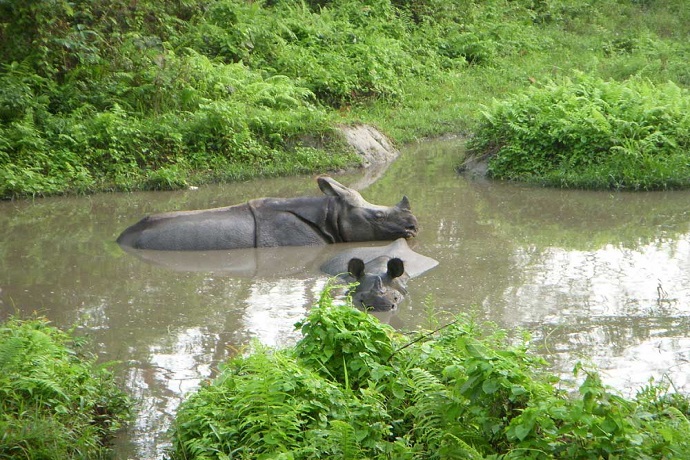Jaldapara

Jaldapara
The Jaldapara Wildlife Sanctuary, which is part of the Gorumara National Park, is known for its one-horned rhinoceros, elephants, Bengal Tigers, spotted deers, barking deers, sambhar deers, bison, wild pig, hog deer, and bison.
With a large variety of eagles, Bengal floricans, Indian Hornbills, jungle fowl, pea fowl, patridges, and more, the sky will be a part of your tourist destination. There are other eagles such as the crested eagle and the fishing eagle can be seen. In the Chilapata Forest, you may also visit the adjoining Gorumara National Park and the ruins of an old fort. You can ride an elephant through the park because Jaldapara is known for its numerous elephants. Alternatively, you can hire one of the Safaris available.

Hollong Elephant Safari

Jaldapara Museum

Kunjanagar Eco Park

Rhino Watch Water

South Khayerbari
In the northeastern Indian state of West Bengal, there is a wildlife preserve. The park was founded in 1941 with the primary goal of protecting the giant Indian rhinoceros (Rhinoceros unicornis). It is made up of forested flatlands divided by the Torsa River and its tributaries and covers an area of 84 square miles (217 square kilometres) in the northern section of the state, close the Bhutan border. Teak and tall grass make up the majority of the forest cover. Swamp deer, leopards, sambars, hog deer, barking deer, wild pigs, jungle fowl, peafowl, quail, and the occasional elephant or tiger can also be seen within the sanctuary. The sanctuary has elephants that can be ridden.
The river Torsha flows through this rain forest sanctuary, which is largely covered in long grasses and is home to a diverse range of fauna and lush foliage. The Malangi River, which flows from east to west, is also close by. The only way to go into this forest is to ride elephants or go on a jeep safari. Those staying overnight in Jaldapara (Holong Forest Guest House or Tourist Lodge) choose an elephant safari. The morning and afternoon jeep safaris are provided.
Book NowJaldapara Sightseeing


Hollong Elephant Safari
People come here specifically to ride elephants, which they are escorted by native guides and have a beautiful journey through the enormous forest. Elephant rides have been a popular tourist attraction in Jaldapara, which is known for its environmentally friendly and eco-tourism strategy. The elephant safari in Jaldapara takes place in the morning and begins at the WBFDC's Hollong Lodge.


Jaldapara Museum
Jaldapara Museum is included in the Cultural Places area of NiceLocal. This establishment receives a 3.2 rating from NiceLocal visitors and conducts business in Alipurduar. The Museum is a prominent forest mesume in the Dooars. The Jaldapara Museum, which was designated as a sanctuary in 1943, is its most famous feature.


Kunjanagar Eco Park
Within walking distance of Jaldapara Park is an Eco Park. Visitors can see deer, gharial, parakeets, and a few rhinos and elephants on this well-known tour. There are few wild animal sightings here, however there is a Watch Tower where tourists can feel extraordinarily near to nature. The nights are lovely here, and seeing the sun set over the mountains is a once-in-a-lifetime experience. For those who prefer to spend the night, there is a Forest Bungalow.


Rhino Watch Water
The one-horned rhino population in Jaldapara National Park is the park's main draw. Only Kaziranga in Assam has a larger rhino population than Jaldapara, one of the few sites where the one-horned rhino may be found. The national park's grassland provides a favourable natural habitat for rhinos to survive. Visitors come here mostly to see rhinos.


South Khayerbari
Visitors to South Khayerbari, which is located distant from human habitation, can view rescued animals in their natural habitat, providing a sense of closure to the wilderness. The journey to South Khayerbari is a once-in-a-lifetime adventure filled with breathtaking views of the changing terrain. South Khayerbari has a limited number of hotel options for visitors looking to spend some quality time in a natural setting.
Weather Condition
JALDAPARA WEATHERThe Ideal Plan
The nearest airport is at Rupsi, Assam, which is around 114 kilometres away. Jaldapara is a small town about 125 kilometres from Siliguri. When you get in Jaldapara, take a few hours to simply enjoy the amazing beauty of the natural surrounds. On one hand, there are the Eastern Himalayan foothills and the magnificent Dooars, and on the other, the beautiful Torsa river, which flows right through the sanctuary. Winter and the beginning of summer are the finest times to visit Jaldapara Wildlife Sanctuary. The weather is pleasant, making it ideal for seeing animals and on an elephant safari in Jaldapara Wildlife Sanctuary. September, October, November, December, March, and May are the finest months to visit.
- Nearest Railway Station: Hasimara, Hamilton Ganj, Alipurduar & New Alipurduar
- Nearest Airport: Bagdogra





















